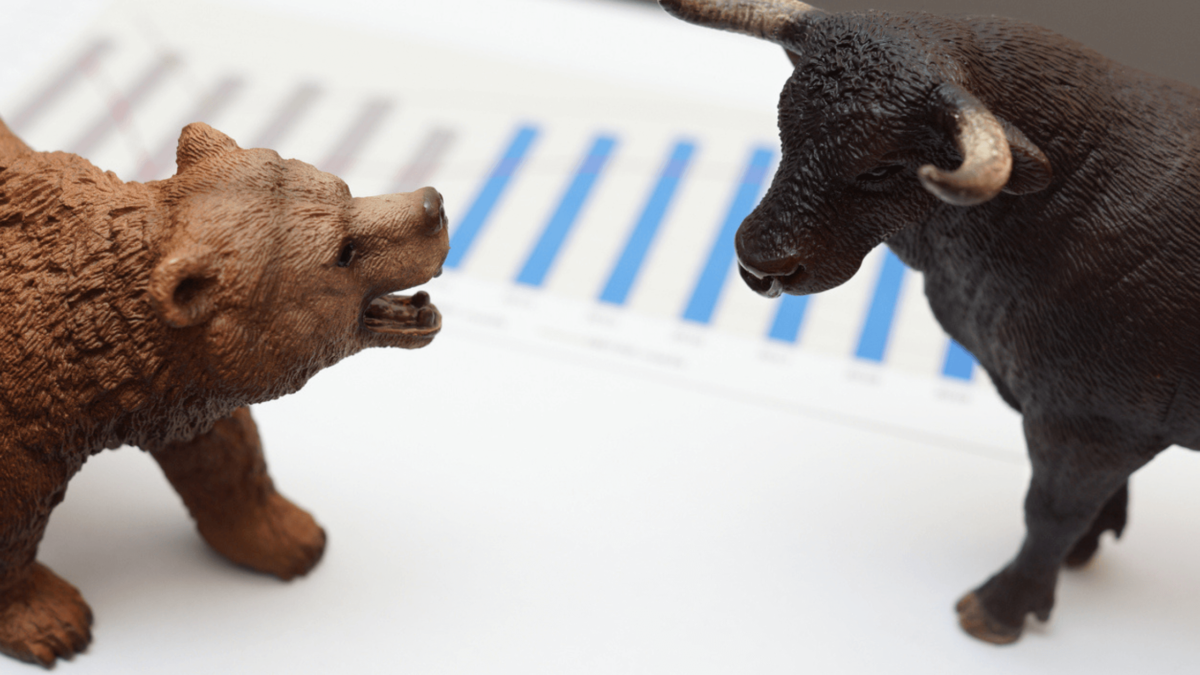Omicron, Stocks and Economies: Here’s What It All Means for Investors
November 29, 2021

While the “Omicron” Covid-19 variant is a short-term disruptor, it’s not a gamechanger for the equities bull market. The selling of risk assets triggered by Omicron could continue in the short run.
But over the medium-term, the sell-off could prove to be a buying opportunity on the likely deferral of rate hikes around the world.
Making market calls on this is fraught with difficulties, given the lack of information of this new variant.
We know it is much more transmissible than even Delta; we know it has a large number of spike protein mutations which could allow it to evade current vaccines.
But we don’t know if it is more deadly than previous variants. And we still don’t have conclusive evidence of its ability to evade all existing vaccines.
Correction rather than trend change
Markets, in a funk, generally sell first and ask questions later. The short response is “We wouldn’t indiscriminately join the stampede out of risk assets”.
The longer response is “Near term, Omicron will prove disruptive. There will likely be more downside risk ahead”.
But we are looking at something more along the lines of a 10% correction from last Wednesday’s close (considering the US was closed Thursday for Thanksgiving) rather than a new bear market.
The rise of new “variants of concern” was always a known threat. Hence, a two-steps forward, one-step back shuffle towards reopening was inevitably the likely process anyway.
But markets tend to be manic-depressive, and in recent months, euphoria had gotten ahead of those known downside risks.
On/off again growth
Omicron is not a gamechanger. Yes, it has the potential to force some economies back into lockdowns, but it won’t reverse the trend towards reopening.
Vaccines will be reworked in coming weeks. Indeed, Pfizer Inc (NYSE: PFE) said it could deliver an updated vaccine to deal with Omicron within 100 days – if the new variant was resistant to the current version.
Treatments are also being worked on. There had been some disappointment in the efficacy shown in the latest test results for Merck & Co Inc’s (NYSE: MRK) Mulnopiravir.
But there is still Pfizer’s Paxlovid, that’s still undergoing further tests, with interim tests showing an 89% reduction in hospitalization rates.
Yield spreads suggest potential bargain hunting
For asset markets, the discount rate is critical to valuation and market pricing.
And recently, markets have been a little edgy, given the rises in the 10-year UST yield (US10Y); calls for more rapid tapering of Federal Reserve asset purchases; and Fed Funds Futures increasingly pricing in the first rate hike next year.
Omicron will ease the pressure on rates and yields. We will likely see softer Treasury yields in coming weeks in response to the likelihood of some loss of economic activity as the world adjusts to the health threat of Omicron.
At the current forward earnings yield of 4.8%, the S&P 500 Index has a healthy gap over the US10Y yield of 1.48%.
Or displayed more dramatically, MSCI Europe’s earnings yield is around 6.4% versus the 10-year German Government bond yield of -0.3%.
For Japanese equities, the earnings yield is around 6.6% against the 10Y JGB yield of 0.07%.
Airlines and oil stocks could look interesting
The biggest losers so far have been the stocks most geared towards a return to travel – both domestic and international. That is, airlines, cruise companies, hotels, and oil stocks.
But even among these, airlines and oil stocks will look interesting fairly soon. Hotels may have some way to go yet before they look interesting again. But some airline stocks are approaching oversold levels.
Oil stocks will also look interesting for bargain hunters in coming days, although near-term sentiment could depend on signaling from OPEC+ at its 2 December meeting.
However, over coming months, as the Northern Hemisphere enters winter, there is a looming energy shortage.
Crude oil inventories are low; OPEC+ has been under-delivering on its targeted production increases because of capacity constraints.
Furthermore, the recent release of stocks from the US Strategic Petroleum Reserves is largely an exchange programme under which borrowers have to start returning the crude by next year with an added premium that grows the longer they take to return the crude.
Growth to outperform value near term
Near term though, the beneficiaries of lockdowns could enjoy the sort of rebound that we saw on “Black Friday” for Netflix Inc (NASDAQ: NFLX).
Other pandemic beneficiaries such as drug makers will also benefit. This will extend the outperformance of growth over value for a while.
Longer term, however, value appears to have bottomed relative to growth. So, this is a near-term trading situation.
As we look further out to next year, the pressure on rates and yields will return, as will the downside pressure on the relative performance of growth over value.
Likely US Dollar weakness
On the currency front, the easing of rate hike expectations and the softening of US Treasury yields (particularly those at the shorter end of the curve) will weaken the US Dollar against the majors.
This weakness could extend through the whole of next year, as we expect US inflation to run faster than the rest of the Developed Markets.
And given the Fed will likely err on the side of rates caution – that is, keeping them at zero for longer – the real yields on US Treasuries will be less attractive vis-à-vis those of other Developed Market (DM) government bonds.
Consider gold and REITs as inflation plays
Price pressures won’t necessarily ease because of the possibility of renewed lockdowns. Quite the contrary.
Heightened vigilance, renewed social distancing at work, and borders closing again are likely to worsen supply chain and labor mobility problems which have contributed to inflation around the world.
And if DM governments extend or renew pandemic payments to people to stay at home, that will contribute yet again to inflationary pressures through government debt accumulation and monetary expansion.
These inflationary pressures will likely renew interest in gold, which could stage a rebound, in tandem with US Dollar weakening.
For investors with a time frame that runs over the course of 2022, sell-offs in REITs with quality assets and pricing power could be opportunities to play the inflation theme.
Real estate are hard assets that should outperform in an inflationary environment, particularly where central banks are on hold when it comes to rates.
Chinese assets back in favour?
China – with its hitherto successful pandemic management – could turn from out-of-favour underperformer to outperformer, with the arrival of Omicron.
And as the DM economies struggle to stimulate with zero rates and very low (or no) reserve requirements for banks, China is well placed to cut both policy rates and reserve requirements for its banks to stimulate its economy.
Indeed, it is likely to encourage – albeit cautiously – fixed asset investment again, to balance renewed economic weakness in export markets.
As a result, Chinese equities and China-related plays, including miners and the AUD/USD, are possible beneficiaries.
Disclaimer: CGS-CIMB Chief Investment Strategist Say Boon Lim doesn’t own shares in any companies mentioned.
Say Boon Lim
Say Boon Lim is CGS-CIMB's Melbourne-based Chief Investment Strategist. Over his 40-year career, he has worked in financial media, and banking and finance. Among other things, he has served as Chief Investment Officer for DBS Bank and Chief Investment Strategist for Standard Chartered Bank.
Say Boon has two passions - markets and martial arts. He has trained in Wing Chun Kung Fu and holds black belts in Shitoryu Karate and Shukokai Karate. Oh, and he loves a beer!







